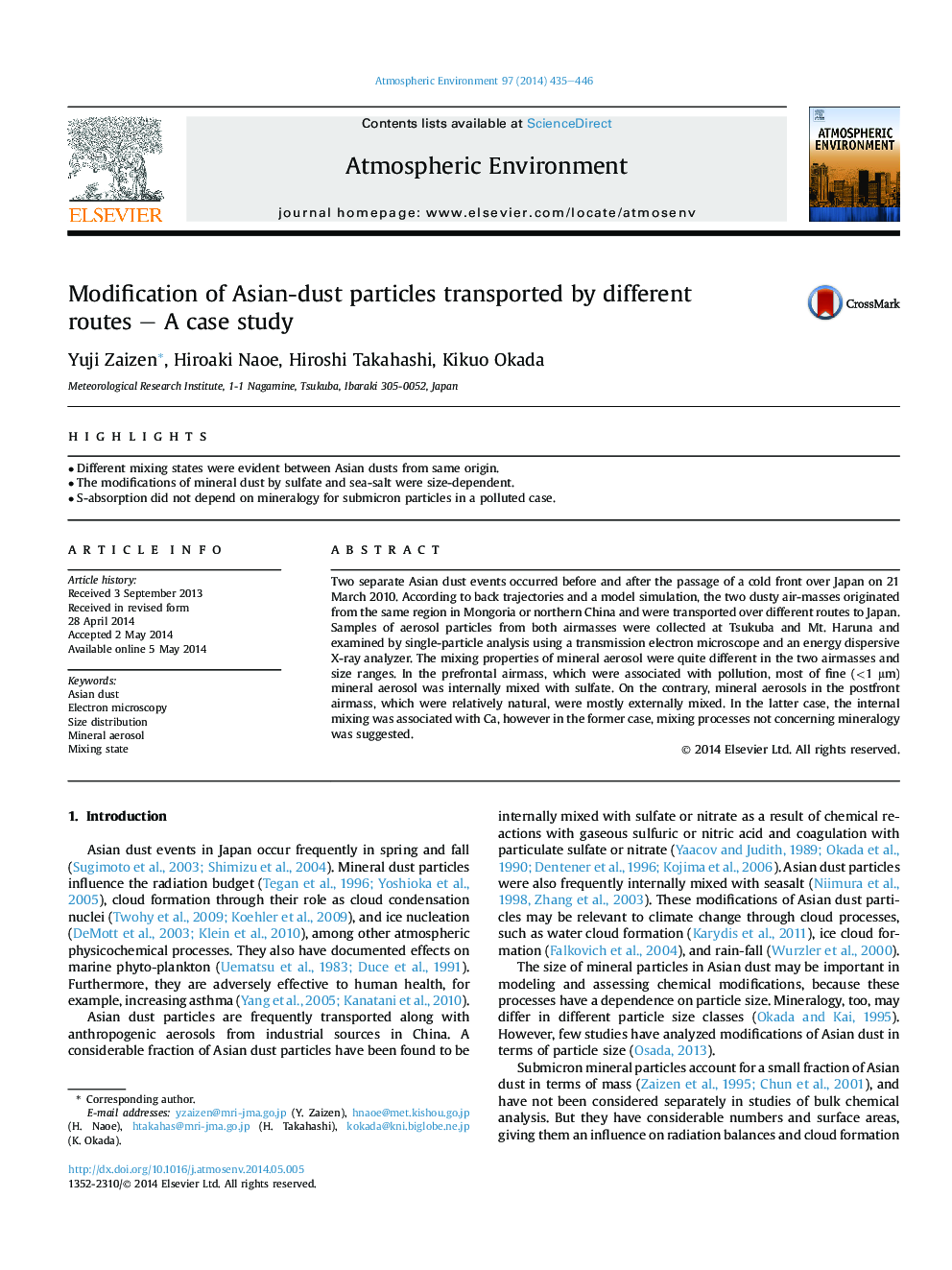| Article ID | Journal | Published Year | Pages | File Type |
|---|---|---|---|---|
| 6339837 | Atmospheric Environment | 2014 | 12 Pages |
â¢Different mixing states were evident between Asian dusts from same origin.â¢The modifications of mineral dust by sulfate and sea-salt were size-dependent.â¢S-absorption did not depend on mineralogy for submicron particles in a polluted case.
Two separate Asian dust events occurred before and after the passage of a cold front over Japan on 21 March 2010. According to back trajectories and a model simulation, the two dusty air-masses originated from the same region in Mongoria or northern China and were transported over different routes to Japan. Samples of aerosol particles from both airmasses were collected at Tsukuba and Mt. Haruna and examined by single-particle analysis using a transmission electron microscope and an energy dispersive X-ray analyzer. The mixing properties of mineral aerosol were quite different in the two airmasses and size ranges. In the prefrontal airmass, which were associated with pollution, most of fine (<1 μm) mineral aerosol was internally mixed with sulfate. On the contrary, mineral aerosols in the postfront airmass, which were relatively natural, were mostly externally mixed. In the latter case, the internal mixing was associated with Ca, however in the former case, mixing processes not concerning mineralogy was suggested.
